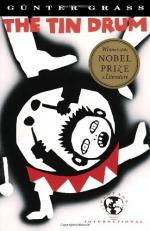|
This section contains 178 words (approx. 1 page at 400 words per page) |

|
Although Grass is renowned for his linguistic playfulness and his careful avoidance of simplicities of theme, W. Gordon Cunliffe points out that Grass uses all the skills of a Realistic author.
He can re-create the behavior of shopkeepers, peasants, policemen, and waiters. His sensitivity to dialects is extraordinary. His details make skat players, gypsies, party officials, and schoolmasters come vividly to life, even when they are the subject of satire or direct ridicule. Much of this derives from his specific interest in the locale of Danzig. Grass is thereby part of the tradition of modern authors like James Joyce, William Faulkner, and Cesare Pavese, whose works are intimately related to a particular place. He often uses the actual names of shops and people from Danzig. Much of the vividness of The Tin Drum derives from its careful, sometimes shocking, observations of such things as an eel-infested horse's head...
|
This section contains 178 words (approx. 1 page at 400 words per page) |

|




